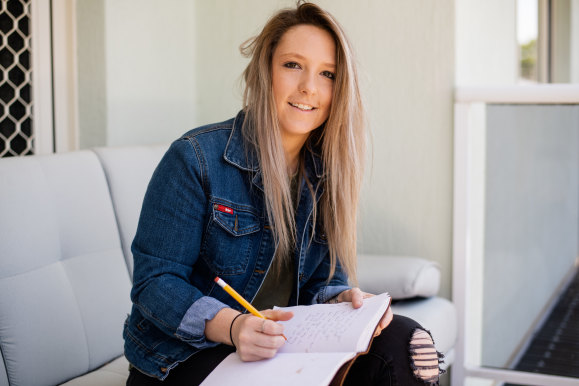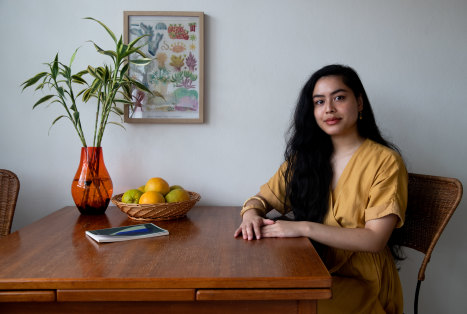Think you know what Australian poetry is? Think again
It’s Poetry Month, which prompts me to wonder: what is the face of Australian poetry today? Could it be literary darling Nam Le, whose debut poetry book, 36 Ways of Writing a Vietnamese Poem, is being released by Scribner next year? Already there’s hype around what’s promised to be an “explosive, devastating” reckoning with identity. “A bolt of lightning,” says publisher Ben Ball.

Courtney Peppernell’s poetry is unlikely to win literary awards, but is hugely popular.Credit: James Brickwood
Or could the face of poetry be Sydney writer Courtney Peppernell? Her Pillow Thoughts poetry collections exploring “hope, encouragement and the beauty of looking inward” are unlikely to win any literary awards, but they have inspired more than a million followers on social media and have sold more than a million copies.
The answer is that there is no one face to represent Australian poetry. The faces are more numerous and more diverse than ever before. In the past decade or so, says Yvette Holt, “there’s been a huge recalibration of who is getting published and where, with a flourishing of poetry from First Nations, queer, culturally diverse, all-abilities persons”.

Eunice Andrada’s Take Care is a confronting book-length radical exploration of rape.Credit: Edwina Pickles
This doesn’t mean that traditional poets (many of them older, straight, white males) are missing out: it’s just that our concept of poetry is getting much more inclusive. Holt, who is chair of the First Nations Australia Writers Network (FNAWN) and the First Nations board director of the national poetry body, Australian Poetry, compiles lists of published poems every year for guest editors of the Best Australian Poems anthology. They have to pick 100 poems from an astonishing array of more than 5000.
Publication today doesn’t necessarily mean in books: many poems appear first or exclusively in digital media, which is where many younger readers discover poetry. Red Room Poetry, which is organising a series of events around Australia for Poetry Month, aims to encourage access both for writers and readers of poetry. It commissions a wide range of poems from adult writers and pay ASA rates for digital-first publication. Pantera is bringing out A Line in the Sand, an anthology of 80 poems representing 20 years of Red Room poets – including some of Australia’s finest, says Red Room artistic director Tamryn Bennett.
What are the poets writing about? “We see a lot of environmental themes and lived experience from different communities,” Bennett says. “We’ve provided space for First Nations voices addressing impacts of colonialism. There are a lot of poems about the cost of living and some about fraudulent text messages. It’s a real mix.”
Mainstream publishers may be bringing out fewer books of poetry, but the ones they pick have impact. Allen & Unwin has published Madison Godfrey’s queer memoir Dress Rehearsals, and Hachette is about to publish First Nations Susie Anderson’s the body country. Then there is a host of smaller publishers with strong annual poetry lists, including Vagabond, Puncher & Wattmann, Giramondo, UQP, Cordite and Running Water Community Press.
Who is reading this poetry? Many people you might not think of as the traditional audience, says Holt. There have been good sales for Evelyn Araluen’s satirical Drop Bear, which won last year’s Stella Prize, and the confronting Take Care by Eunice Andrada, a book-length radical exploration of rape.
As for the poets of the future, Red Room is encouraging young students and publishing their work. There’s a daily competition during Poetry Month. In a venture called Poem Forest, every nature poem received from a young person results in a tree planting: 15,000 trees have been planted in the past year.
“Poetry is language at is best,” says Bennett. And what we’re seeing now is “new and unexpected and flipping language on its head”.
The Booklist is a weekly newsletter for book lovers from books editor Jason Steger. Get it delivered every Friday.